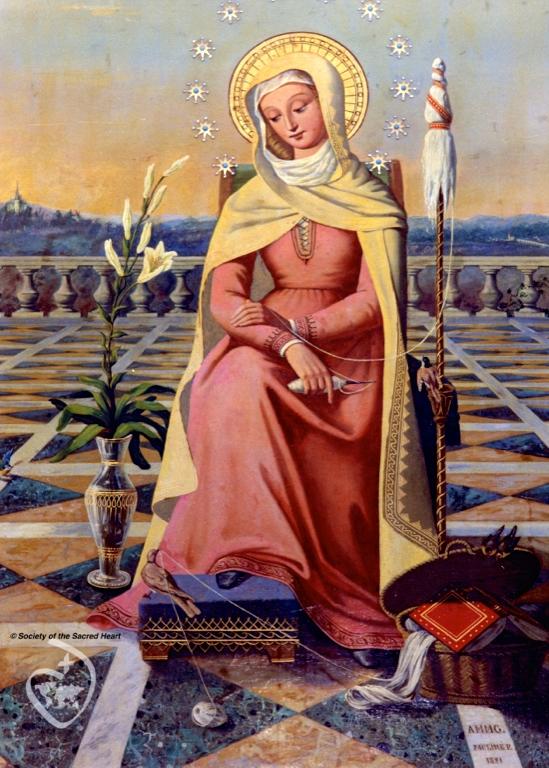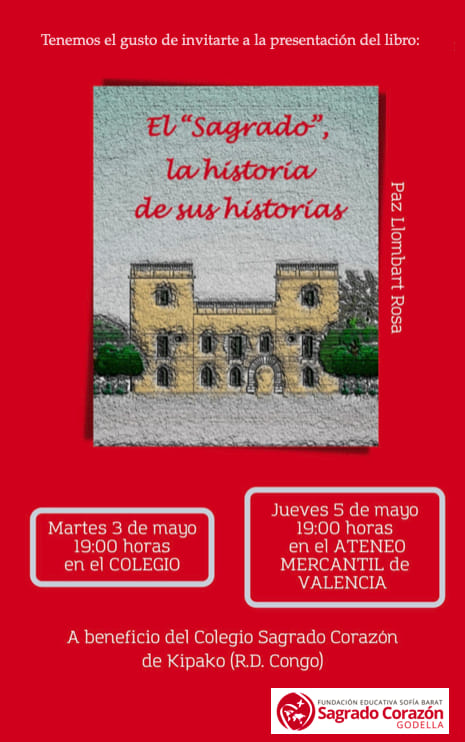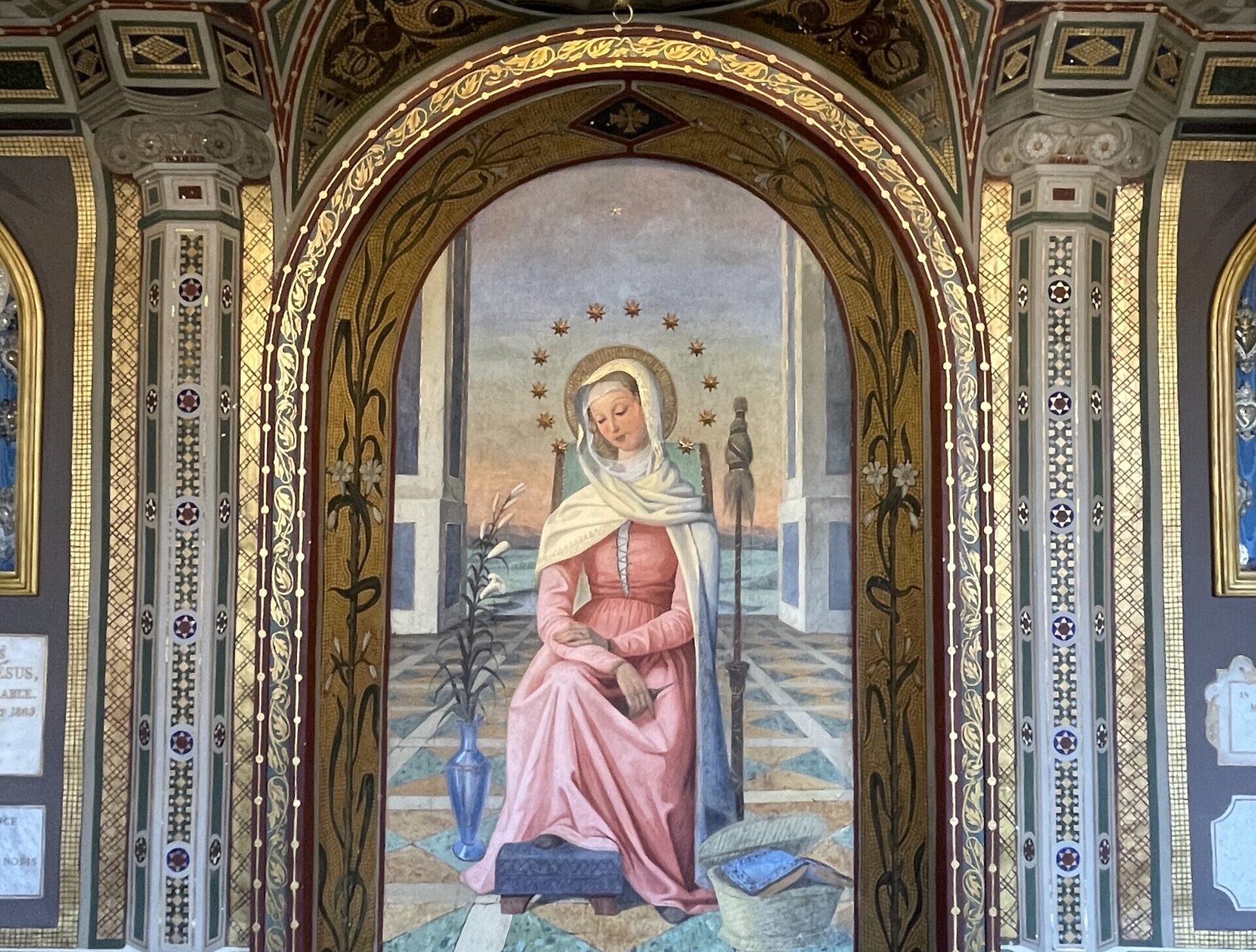In 2022, the book El Sagrado, la historia de sus historias (El Sagrado, the History of its Stories) was published. It tells the history of the school in Godella (Valencia), founded in 1898, and was written by Paz Llombart, a former teacher at the school.
On the eve of the 125th anniversary of the school, the Feast of the Blessed Mater gives us the opportunity to remember that life is not always easy, but that often the important thing is to face the difficulties with confidence and hope.
This article presents some particularly difficult moments for the painting of the Blessed Mater at the school in Godella, which is an original painting by Paulina Perdreau, as described in various sections of Paz Llombart’s book.
According to a nun writing in 1940: “The picture of Mater of the House of Godella was painted by Mother Perdreau in 1881 during her stay in the House of Layrac. In the background, one can make out the panorama that could be seen from the terrace of the old Abbey. One can even see a train on a viaduct and nineteenth-century castles.”
Since 1903, the painting has been in its present location, giving its name to a chapel of intermediate size that was formerly the Study Room of the Grand Pensionary.
During the Spanish Civil War (1936-1939) the school was seized and the nuns were forced to abandon it, taking refuge in various houses in the town first, leaving for the city of Valencia and then to Barcelona. From there, they embarked for Marseilles, far from the violence and persecution in Spain.
With the nuns far from Godella, the school was occupied by the Republican troops, with the prohibition to take anything of value from it…so how did the image of Mater survive?
The book goes on to compare various versions on that point, and concludes that two sisters asked the mayor to safeguard that image of Mary. “At 10 o’clock in the evening (July 29, 1936, the same day the RSCJ were expelled from the town) they entered the empty school, cut the canvas to separate it from the frame and carefully rolled it up. They left it for the time being in the forest under the pine trees”. One of their neighbors later entered the forest and with great caution took it home. The next day, he gave it to another neighbor, who kept it in his house, and it remained there until the end of the war. It was a brave and risky action that ensured the survival of the painting of Mater de Godella, without which it probably would have been destroyed.
On March 31, 1939, the nuns returned to the school and a few weeks later, “the picture was carried in procession through the town, escorted by former students. The Archbishop, nuns and girls waited for it at the school and showered the picture with flowers. Since that moment, the Blessed Mater has remained in the same place where we admire her today”.
Teresa Gomà, rscj
ESP Province
Section |International News
Province |Spain
Our Spirituality |The Sacred Heart Spiritual Tradition
Tags |Mater Admirabilis




